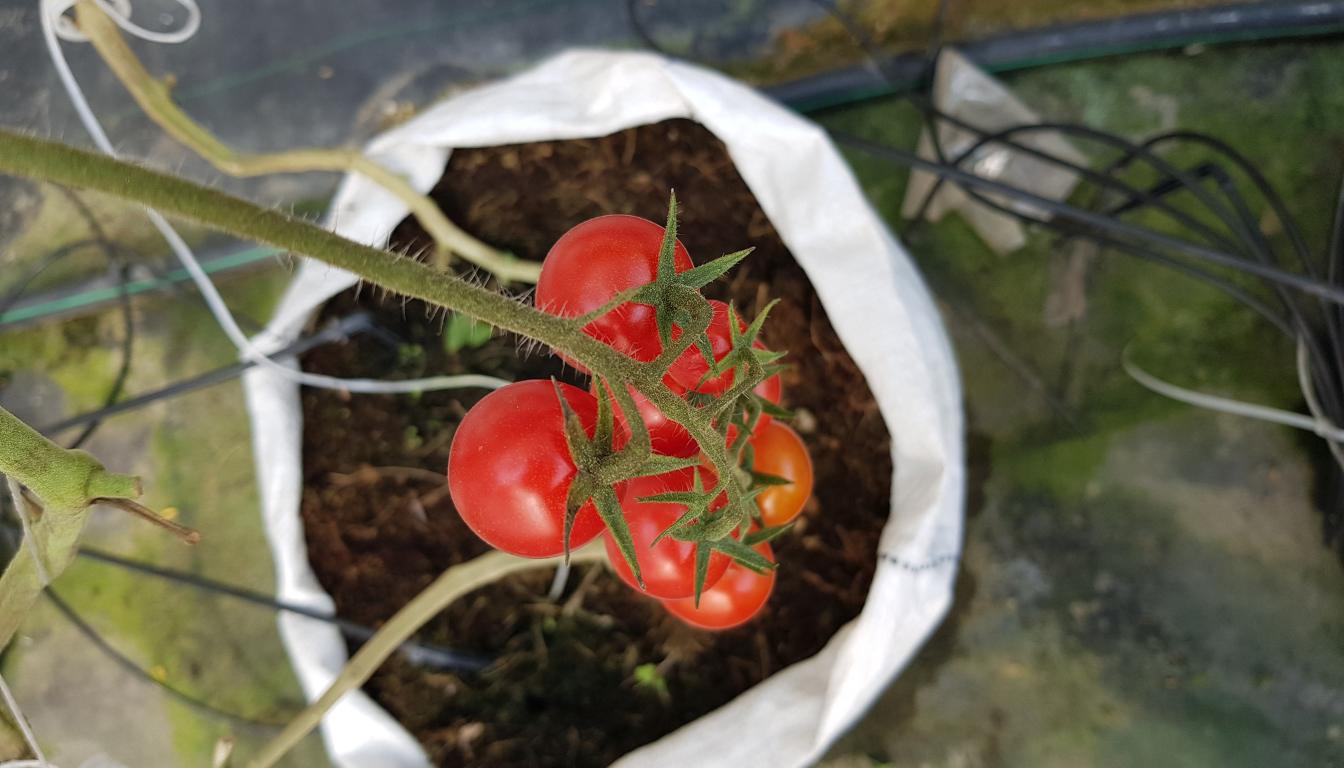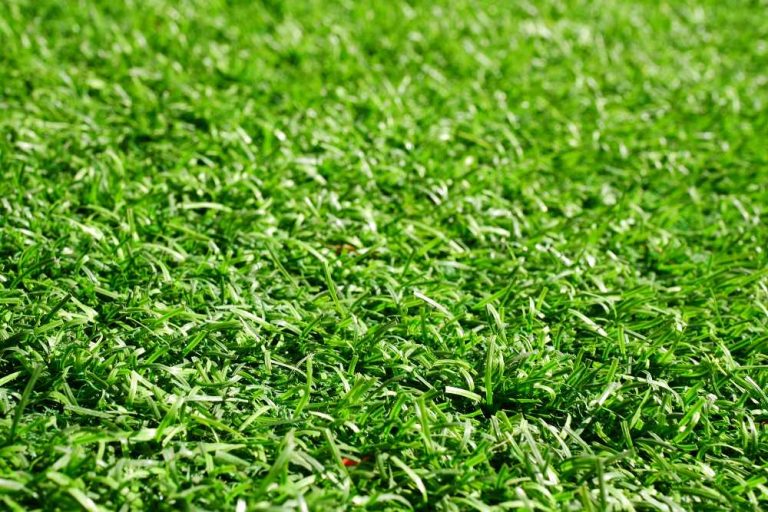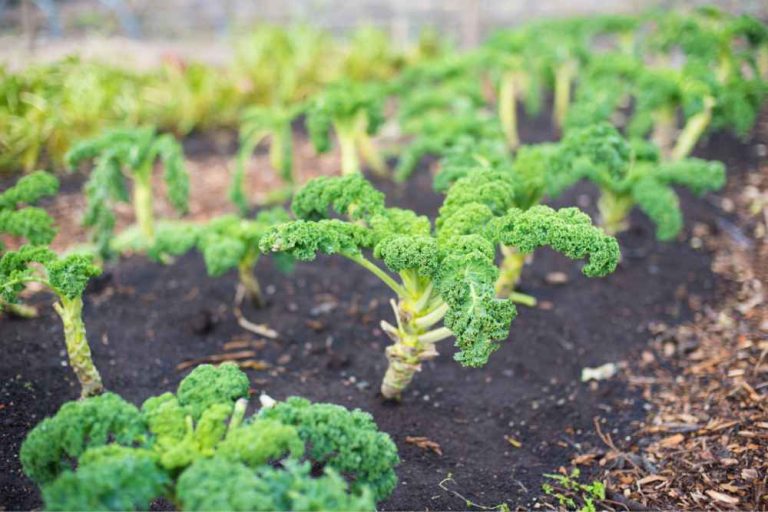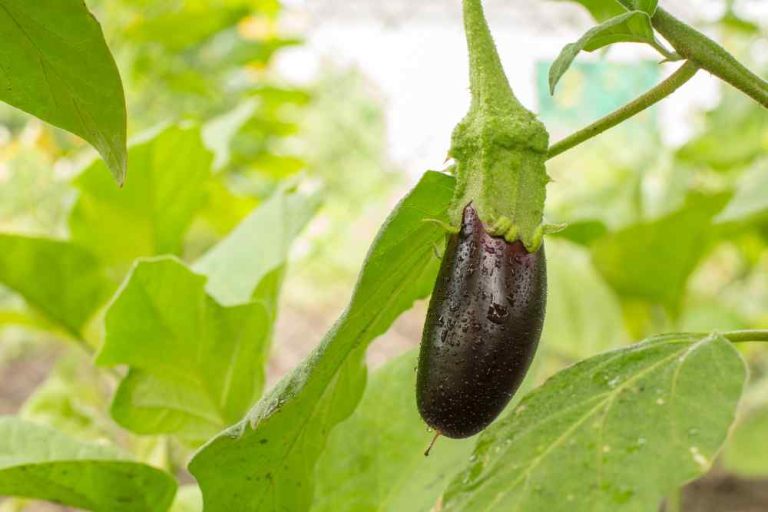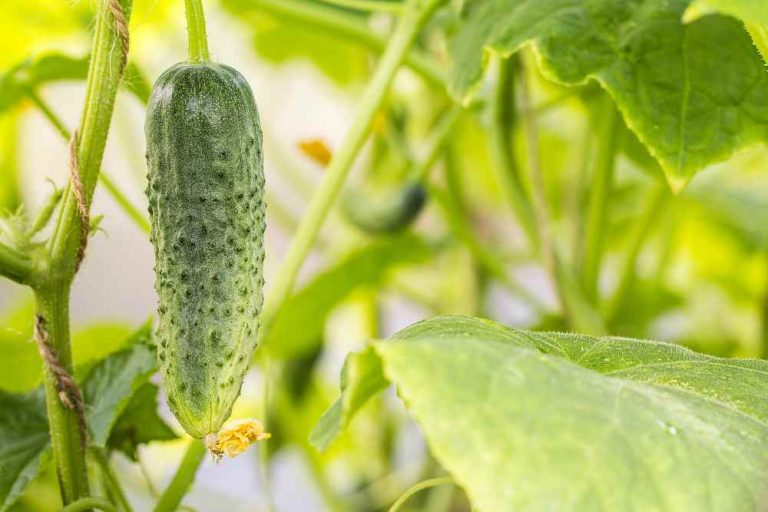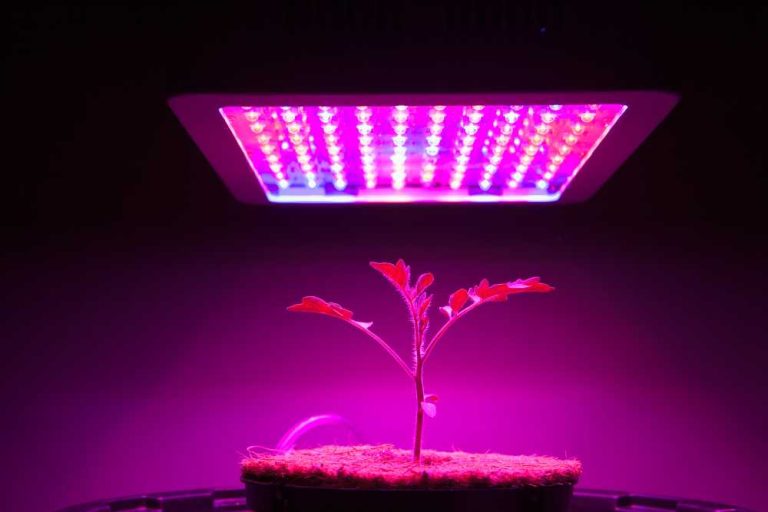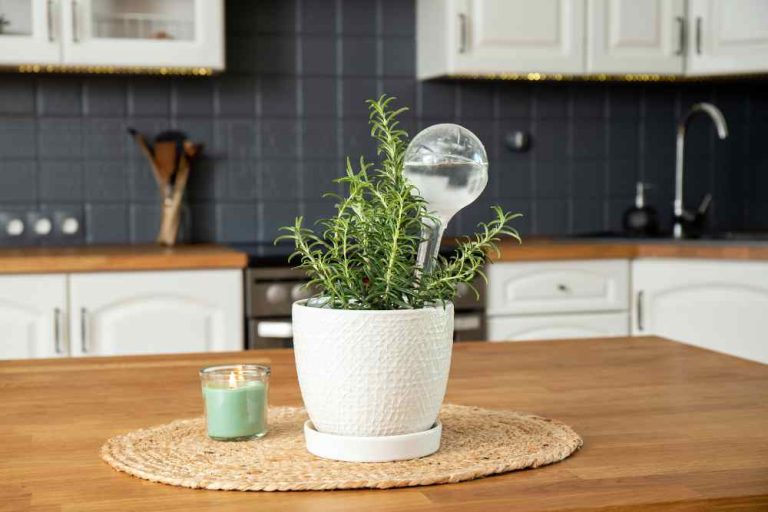Best Size Grow Bag For Tomatoes – Find Out Here
The best size grow bag for tomatoes depends on various factors including the variety of tomatoes you’re growing, the space you have available, and your personal preferences. However, a commonly recommended size for growing tomatoes in grow bags is around 5 to 10 gallons (approximately 19 to 38 liters). This size provides enough room for the tomato roots to spread out and grow well.
Tomato grow bags could be the answer for you if you enjoy growing tomatoes but lack the room for a typical garden or if you want to give your tomato plants a unique experience.
This post will go over the various grow bag sizes and offer advice on which one is best for your tomato plants.
What are Tomato Grow Bags?
Tomato grow bags are woven fabric containers created exclusively for growing tomatoes. These bags are composed of heavy-duty, breathable fabric that provides great aeration and drainage, both of which are necessary for healthy tomato plants.
Tomato grow bags come in several sizes and shapes, and they can be used as independent growth bags, raised beds, or patio or balcony planters. They are popular among individuals with limited space because they allow tomatoes to be grown in a compact and effective way. Tomato bags allow you to eat fresh, tasty tomatoes without the need for a typical garden or raised bed.
The way tomato grow bags function is by offering a controlled growing environment for tomato plants. Grow bags are usually composed of a woven fabric material that facilitates drainage and air movement. These fabric pots encourage stronger root systems and limit the possibility of overwatering, which can lead to root rot.
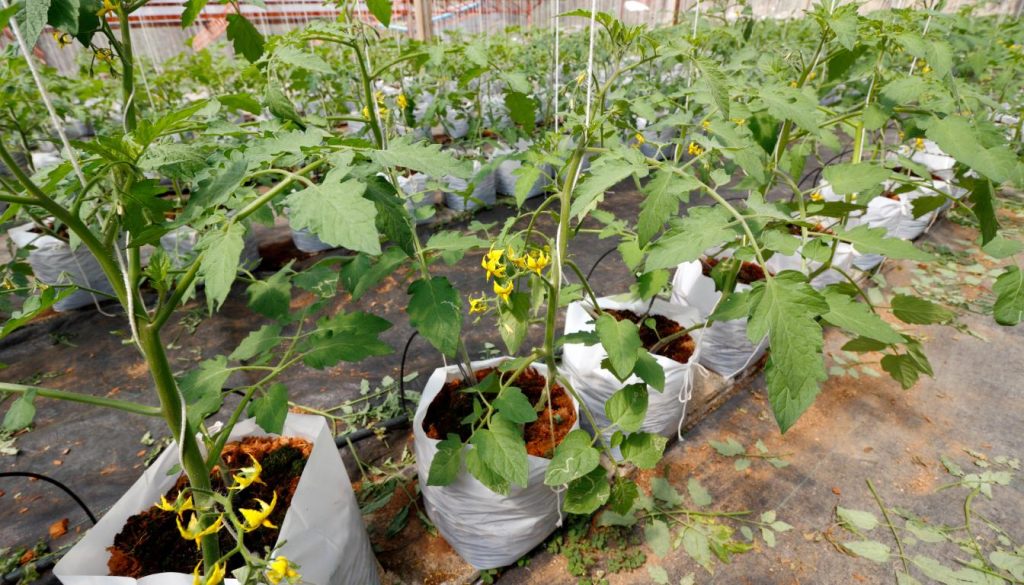
When you put tomato plants in grow bags, you have control over the sort of potting mix or compost used, allowing for improved drainage and aeration. This helps to reduce soil compaction and promotes better root development.
The fabric material of the grow bag also helps to manage the soil temperature, which is critical for optimal development. The fabric allows air to circulate, keeping the soil cool during hot weather and preventing overheating, which can harm the roots.
Additionally, tomato grow bags are portable and may be simply transferred to other areas as needed. This is especially handy for gardeners who have limited space or wish to relocate their plants to a spot with more sunshine or shelter from the weather. In general, growing tomatoes in bags offers a practical and regulated environment for plants to develop in, promoting better root systems and ideal growth circumstances.
Why Use Grow Bags?
Grow bags are an excellent alternative for growing for many reasons, which is why their use has increased dramatically in the last several years!
- Limited Area: Grow bags allow for the cultivation of tomatoes even in cramped areas such as a patio, deck, porch, driveway, etc.
- Disease Pressure – Raising the tomato plant, growing it in a sterilized potting mix, and positioning it away from other plants (deck, patio, etc.), considerably minimizes the danger of disease.
- Good Airflow and Drainage for Healthy Roots – Grow bags use “air pruning” to promote root health.
- Portable – Grow bags may be moved around during the growth season. If you want to increase your harvest, you may even bring them inside throughout the fall!
- Inexpensive – Planter pots or constructing an elevated bed are far more expensive than purchasing a few grow bags!
How To Choose The Right Grow Bag For Tomatos?
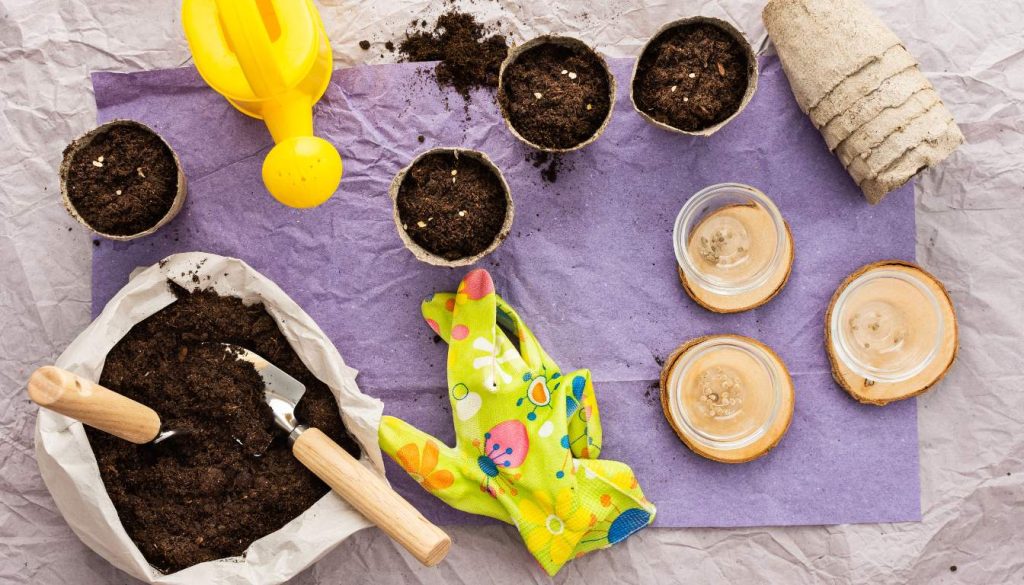
Tomato Variety
The size of your grow bag will depend on the variety of tomatoes you want to grow. Indeterminate varieties, such as Beefsteak and Brandywine, can grow up to 6-10 feet tall, so they need larger grow bags. Determinate varieties, such as San Marzano and Roma, grow up to 3-4 feet tall and require smaller grow bags.
Material
Grow bags are made from fabric, plastic, or biodegradable materials. Fabric bags are the best option since they breathe better and promote greater air circulation. In addition, they have good drainage and are durable.
Space Available
The size of the grow bag you require will also depend on the space that is available. Use a smaller grow bag and cultivate determinate tomato varietals if you’re short on space. Larger grow bags can be used to cultivate indeterminate varieties if you have enough space.
Shape
Grow bags for tomatoes may be used in a variety of growth environments since they are available in round, square, and rectangular shapes. Some bags are tall and narrow, while others are short and broad, providing more freedom in terms of positioning and layout.
Size
The grow bag needs to be large enough to accommodate the tomato type you intend to cultivate. Larger types need at least 10-gallon to-grow bags, while smaller varieties may be produced in 5-gallon grow bags.
Water Drainage
For tomato plants, proper drainage is essential. To avoid water buildup and subsequent root issues, use a grow bag, which includes bottom drainage holes. To prevent waterlogging, make sure the bag is positioned on a surface that drains well.
Growing Medium
The size of the grow bag you require will also depend on the growth media you choose. A bigger grow bag is required to accommodate the root system when using a soil-based growth media. You may use a smaller grow bag if you utilize a soilless growth media like peat moss or coco coir.
Portability and Mobility
If you plan to move your tomato plants around, consider the portability of the grow bag. Handles on the sides might help you transfer the bag without harming the plant. When bad weather forces you to relocate the tomatoes inside or when you wish to reorganize your garden, this is especially helpful.
Price
It’s important to balance quality with affordability. While some grow bags may cost more, they may also have more features, so it’s not hard to get high-quality grow bags at a reasonable price.
Use with other Growing Methods
Additionally, raised beds, conventional gardens, and even hydroponics can be utilized in conjunction with tomato grow bags. They may be used as independent growth bags or as part of a bigger system, which allows for even more flexibility.
Placement
Grow bags for tomatoes may be used indoors or outside on decks, patios, and balconies. You can put them on any flat area that gets enough sunshine, and they are readily movable so you may follow the sun or cover plants from bad weather.
What Size Grow Bag Do I Need for Tomatoes?
Grow bags work best in sizes ranging from one gallon to as large as you like for your tomato plants. There are sizes for these grow bags up to several hundred gallons. You do not necessarily need such a huge grow bag, but you might use one if you want to plant other items in the same bag as the tomato plant.
You must consider the space required for the roots of the tomatoes to grow while choosing the size grow bag. These bigger grow bags will be essential for providing your tomatoes with all the nutrients they can receive.
- An even bigger capacity grow bag would be better for your developing plants if you use one. For a single tomato plant, a 10-gallon bag will work perfectly.
- If you are growing indeterminate tomato types, your grow bags should be 12 to 15 inches deep. Dwarf varieties have shallower root systems so you may use a shallower grow bag. German Pink, Heritage, Beefsteak, Black Krim, Brandywine, and Cherry tomatoes are a few varieties of indeterminate tomatoes.
- You must use a bigger grow bag, perhaps 20 to 30 gallons, rather than using other containers if you wish to grow more than one tomato plant in your grow bag. This should give you a depth of at least 14 inches, allowing the roots to properly develop themselves.
- To ensure that your tomatoes receive the nourishment they require, it will also be essential to water them while they are in their grow bag. To make sure your tomatoes get the proper quantity of water they require, it is always better to water them consistently and equally.
7 Best Tomato Grow Bags
VIVOSUN 5-Pack 10 Gallons Grow Bags
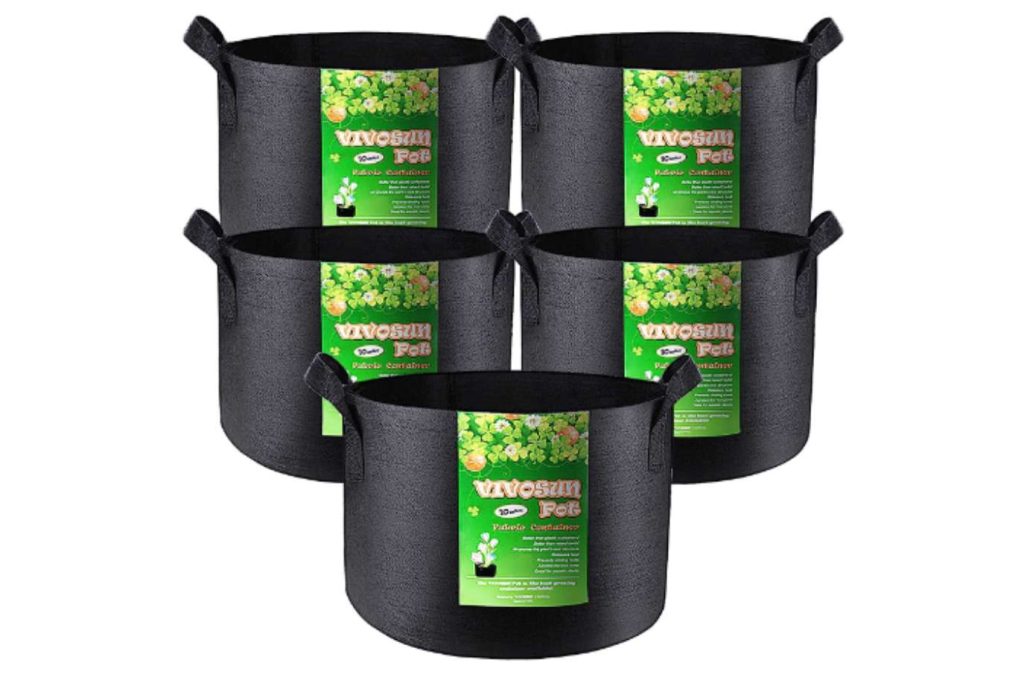
It’s comprised of 300g of thicker, nonwoven cloth and has reinforced robust handle straps for simpler, safer lifting and transporting. This plant container has a flat base and may be simply filled on your own.
The air-pruning and aeration of your plant roots within the grow bag are facilitated by the nonwoven fabric, which also prevents your plant roots from spiraling and gives them a better root structure overall. All surplus water is automatically drained from these grow bags. To prevent extra water from passing through the weaveIdeal for outdoor, patio, and indoor grow operations. It works with both conventional soil and soil mixtures.
You may easily transfer the entire grow bag into a new pot if your plant outgrows the bag; the roots will grow through the bottom. The handles are double stitched, allowing you to transfer your bags full of soil and plants with ease; never deal with overwatering your plants or moldy soil; Your soil will be damp, but not wet.
MEKOLIFE 6-Pack 15 Gallon Grow Bags
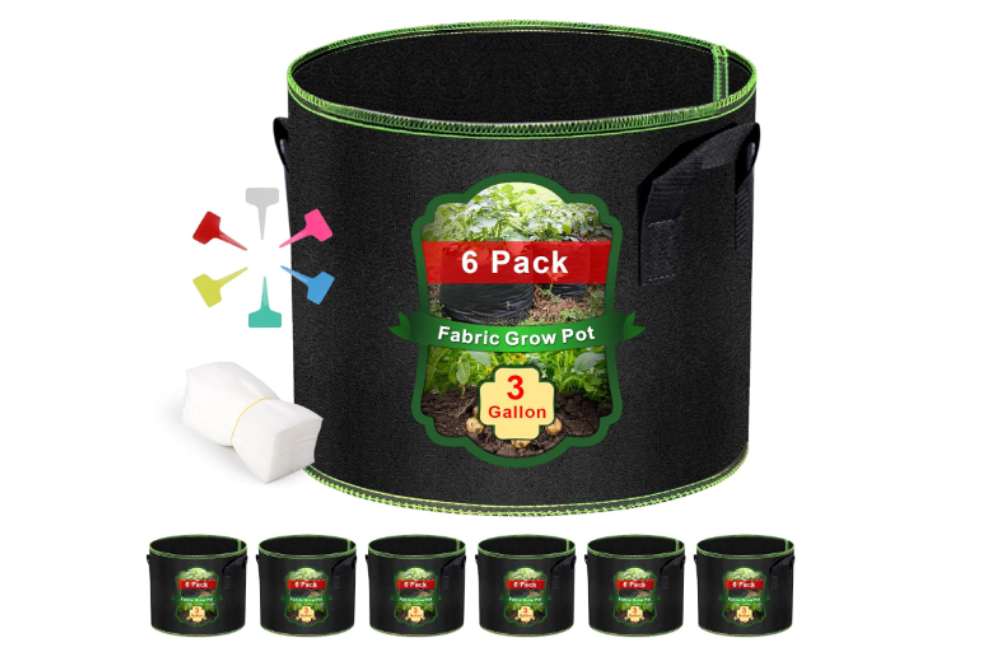
The 15-gallon grow bags are composed of permeable double-layer non-woven fabric and strong-duty felt. The plant bags provide adequate ventilation to prevent excessive wetness. Nonwoven fabric ensures that the pots do not hold extra water, enabling your plant roots to breathe for healthier, more vigorous development.
They are also reusable and do not pollute the environment. These fabric pots have nylon handles, stronger bearing capacity, and reinforced stitching for increased durability, tensile strength, and ease of mobility.
The gardening plant grow bags may be used to produce vegetables and plants with higher root growth, improved soil aeration, and increased air circulation. Patios, gardens, balconies, sunrooms, and other indoor and outdoor spaces are ideal for using cloth bags to suit a variety of purposes.
After the growth season, you may empty the planted grow bags, clean them, and store them dry. The 15-gallon planter pots are small and convenient to store, taking up very little space.
JERIA 16-Pack 10 Gallon Grow Bags
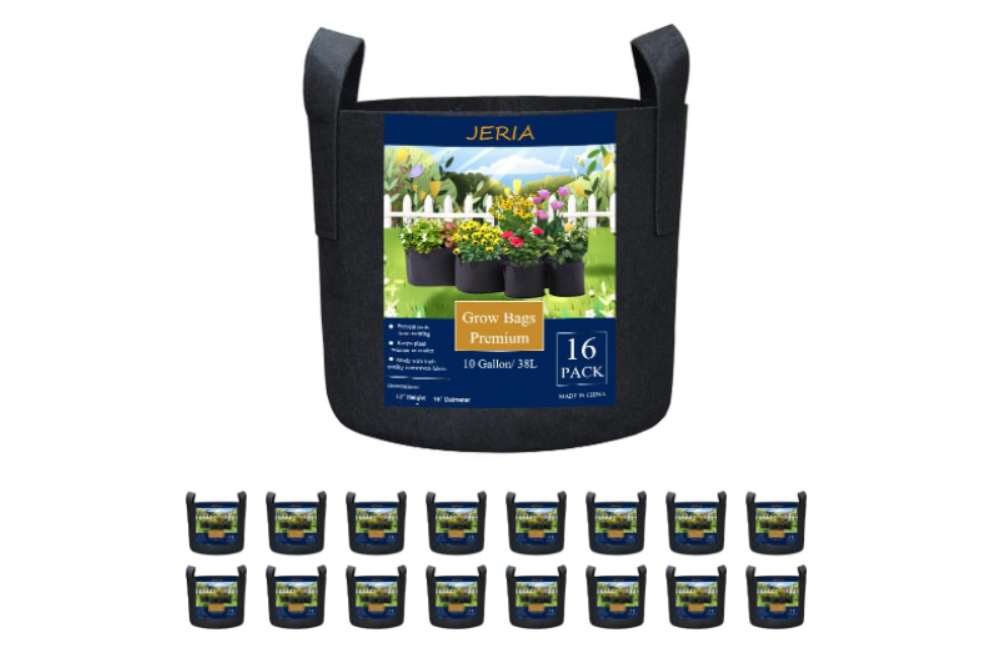
Made of needle-punched non-woven synthetic fiber, this material has good water and air permeability, is lightweight, strong, and performs well against UV light rays. It also has a long lifespan. Plants grown in bags may be carried anywhere and at any time.
Study handles that are integrated for convenience of usage both inside and outside, as well as for easy folding when storing. Perfect for apartments, balconies, decks, porches, and beds. Root transplant cultivation does not require skilled personnel, and common laborers may do it: high survival rate, ability to decrease water consumption, and lower expenses for ongoing upkeep and promotion.
247Garden 5-Pack 10-Gallon Aeration Fabric Pot
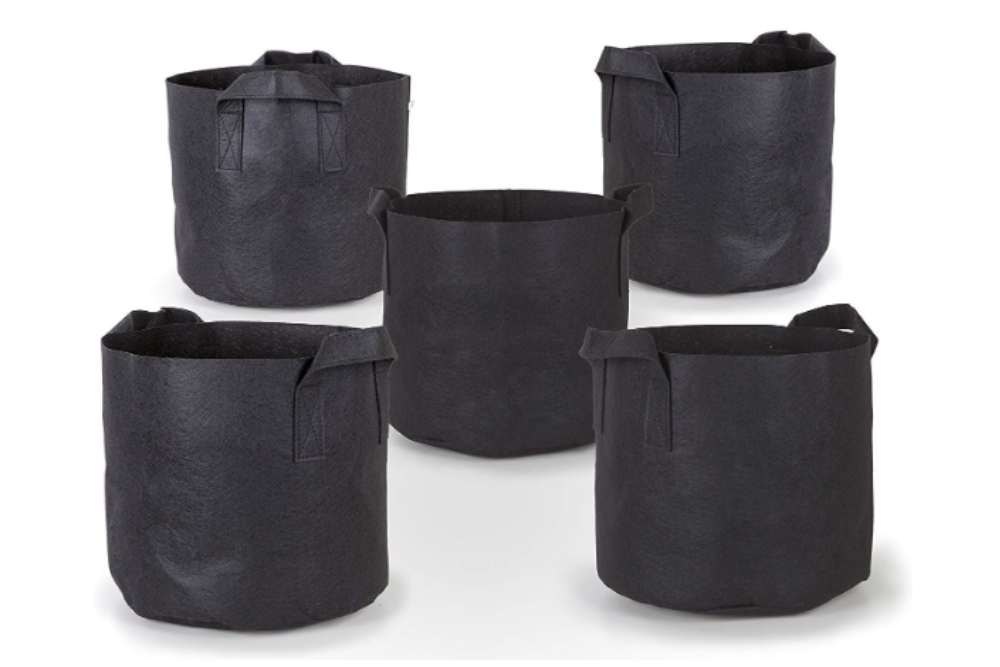
Roots can grow healthier and more permeable thanks to this bag. It enhances the overall root structure and prevents roots from becoming pot-bound, which occurs when roots circle till they die.
When utilizing this bag, the likelihood of transplant shock decreases. When it is ready to be transplanted and has grown, you can place the plant with the bag in the potting soil. The roots will spread outside the bag.
Gardzen 20-Pack 10 Gallon Grow Bags
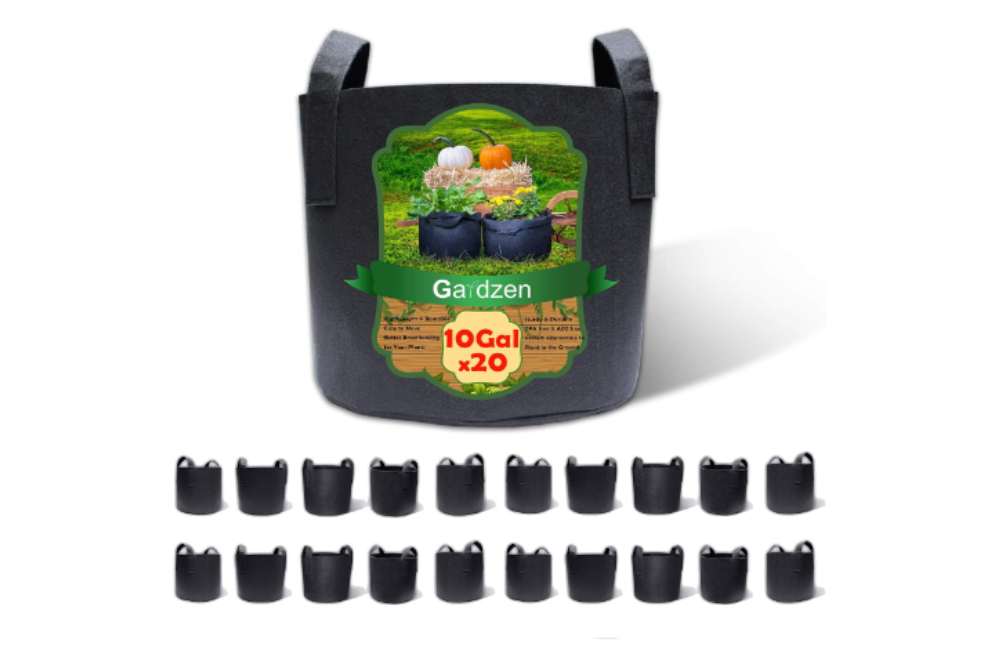
The fabric is made of durable non-woven material free of BPA and AZO. These grow bags are very breathable and aerate well, allowing roots to breathe, stopping roots whirling around, and maintaining a robust root ball. Your plants will grow more vigorously and faster because of the enhanced drainage and ventilation that the woven pattern provides.
2 Pack Black and Green Upside Down Tomato & Herb Planter
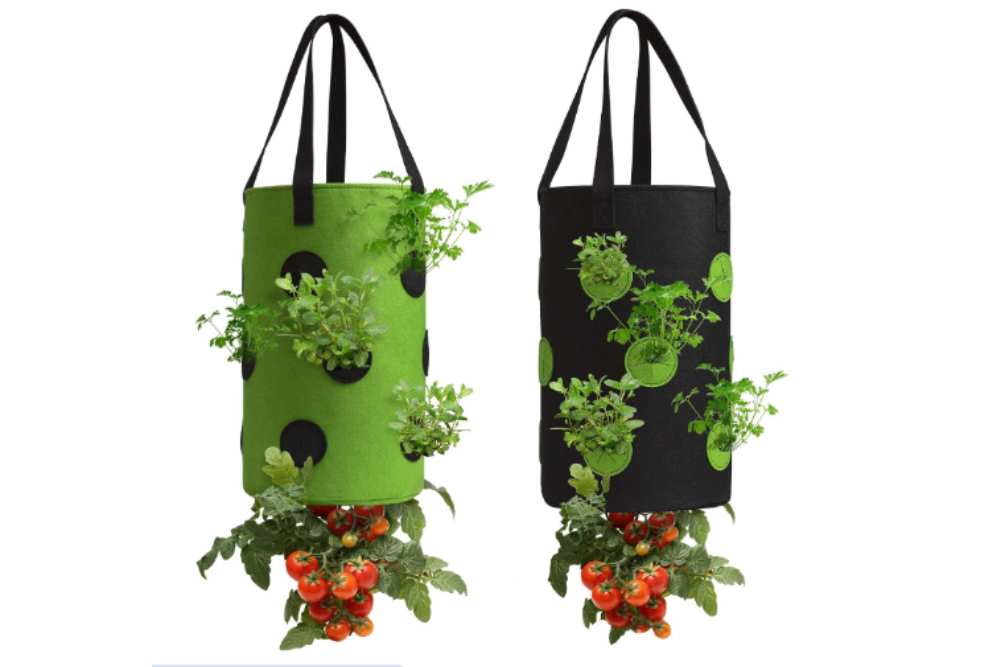
Consists of Nonwoven Fabric with a heavy-duty felt substance that allows roots to breathe freely, promoting healthy plant growth and increased production. improves overall root structure, lowers the danger of transplant shock, and keeps the plant warmer in the winter and colder in the summer.
It includes two pieces of 8.8*15-inch cloth hanging planter bags in green and black. There are two mental hooks for convenient hanging. They can be readily adjusted for more or less sunlight, which is a great feature for plants that like the sun or shade.
Most significantly, you won’t have to deal with painful knees and backs again thanks to these tomato planters hanging. They’re a perfect option if you have deer or other wildlife that visit your plants while you’re not looking. The upside-down design saves space and uses gravity to enhance water and fertilizer flow to roots.
Any outdoor or indoor location is appropriate for the grow bag, including patios, lawns, and gardens. Choose a sufficient height and a sunny spot to hang the bag after loading the plants’ root side first and putting them through the openings. When stored, these bags don’t take up much room and may be utilized for several seasons.
Garnen 10 Gallon Garden Grow Bags

Grow bags made by Garnen have good water drainage and breathability. The permeable material promotes airflow and aids in heat dissipation. Moreover, it produces an action known as “air pruning,” strengthening the plant’s root system.
In addition to preventing unintentional overwatering, the cloth bag drains extra water. When it comes to cultivating plants, Garnen’s 10-gallon grow bags are highly recommended. Compared to pots and plastic containers, they provide a number of benefits.
They are environmentally friendly, and the plants you cultivate in them will be safe to consume. Tomatoes, potatoes, flowers, herbs, salad greens, peas, and many other fruits and vegetables thrive well in them.
With Garnen’s grow bags, relocating is not a problem whether you want to grow your plants indoors, outdoors, or on a patio. It is simple to transport plants by yourself or with another person thanks to the two handles. They are readily folded up and stored in a shed during the off-season.
Related Posts
- How to Keep Soil Moist
- What is Well-Drained Soil
- How to Mix Compost into Soil
- How to Make Soil Fertile Naturally
- Why does your Garden need Tested Soil?
- What is Soil Temperature in Agriculture
- How to Break Down Clay Soil Fast?
- Best Soil pH for Tomatoes and Cucumbers
- 20+ Chic Boho Bedroom Ideas for a Cozy and Stylish Retreat - June 20, 2024
- 12+ Modern Boho Living Room Ideas to Create a Unique Oasis - June 10, 2024
- 10 Stunning Canopy Bed Ideas for a Dreamy Escape - May 16, 2024

